How to celebrate Govardhan puja and make Govardhan puja Prasad thali. A no onion-garlic Thali consisting of nearly 56 ingredients. Fifty-six- “Chappan Bhog” is synonymous with Lord Krishna. It symbolizes prosperity and a rich feast offered to the Lord to pray and get his blessings.
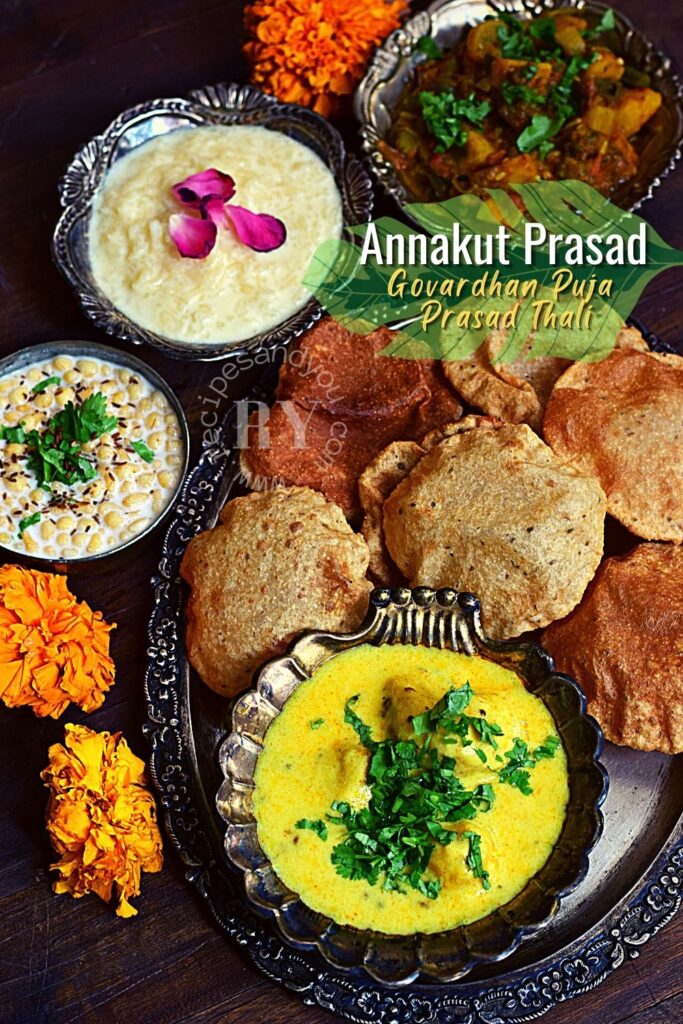
- All about Govardhan Puja | Annakut, and why do we celebrate it ?
- What do we eat on Govardhan Puja?
- How do we celebrate Govardhan Puja / Annakut Puja?
- Why is cow dung used on govardhan puja?
- Other Festive recipes on the Blog.
All about Govardhan Puja | Annakut, and why do we celebrate it ?
Govardhan Puja, a festival celebrated a day after Diwali, is observed to celebrate the victory of Lord Krishna over Lord Indra. As per the popular legend, Lord Krishna protected the people of Vrindavan from the wrath of Lord Indra by carrying Govardhan Parvat on his little finger. Govardhan has since become a major pilgrimage site in Braj for devotees of Krishna. Families create an image of Giriraj Govardhan (the mountain) from cow dung, adorning it with miniature cow figures as well as grass as twigs, representing trees and greenery. Fifty-six food items (Chappan bhog) are typically prepared and offered to Lord Krishna. These 56 items could be anything from sweet to adding all veggies into the bhog.
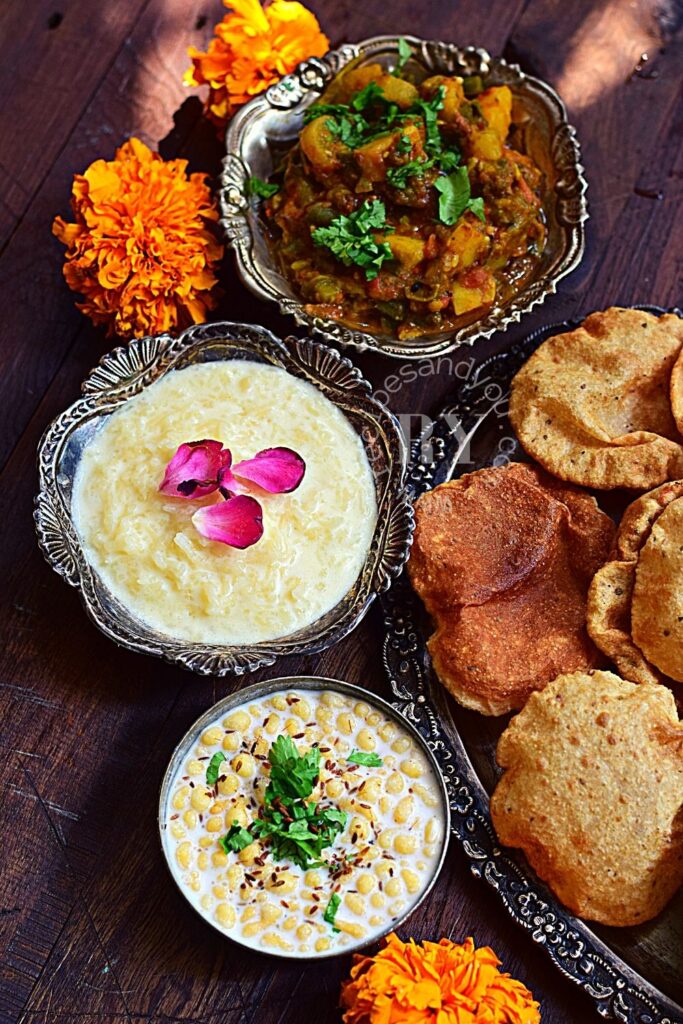
What do we eat on Govardhan Puja?
Chappan Bhog or 56 Delicacies are traditionally prepared and offered to Lord Krishna. Following this tradition, Annakut ki sabji, a mixture of all seasonal vegetables, is made on Govardhan Puja. Govardhan puja comes a day after Lakshmi Puja. People also give a milk bath to Lord Krishna’s idol, dress him in new clothes and jewellery, and offer him various delicacies.
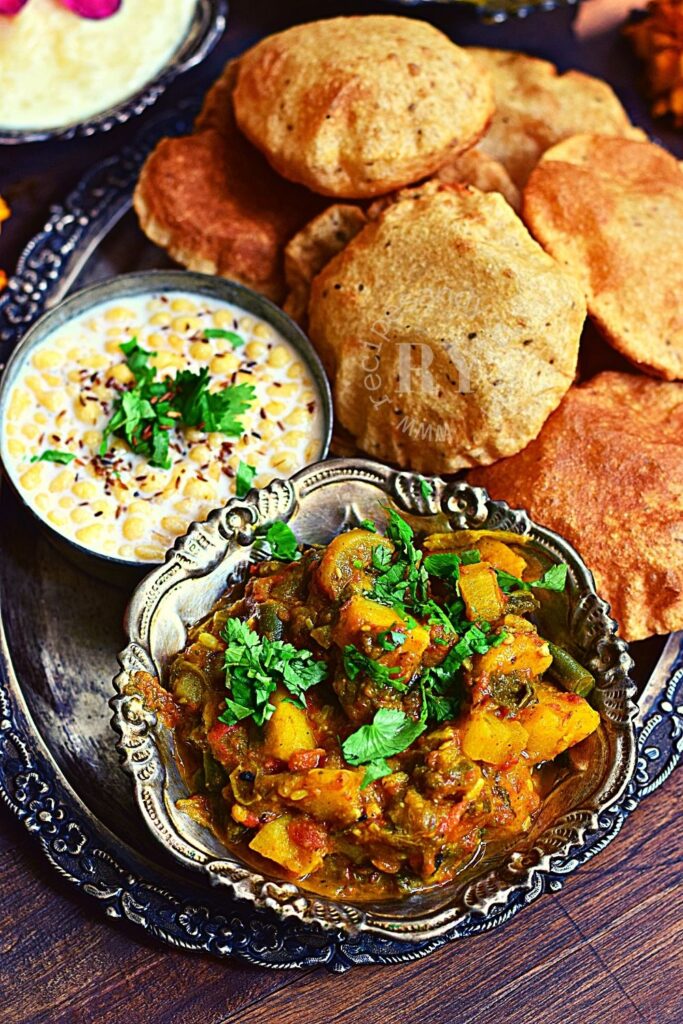
How do we celebrate Govardhan Puja / Annakut Puja?
Govardhan Puja also known as an Annakut puja, is a day when we worship Lord Krishna and prepare and offer a large variety of delicacies to him and other gods as a mark of gratitude. Devotees offer a mountain of food, representing the Govardhan Hill. In other cities, people make an image of Lord Krishna carrying the Govardhan parvat with cow dung and worship this idol and offer “Chappan Bhog“.
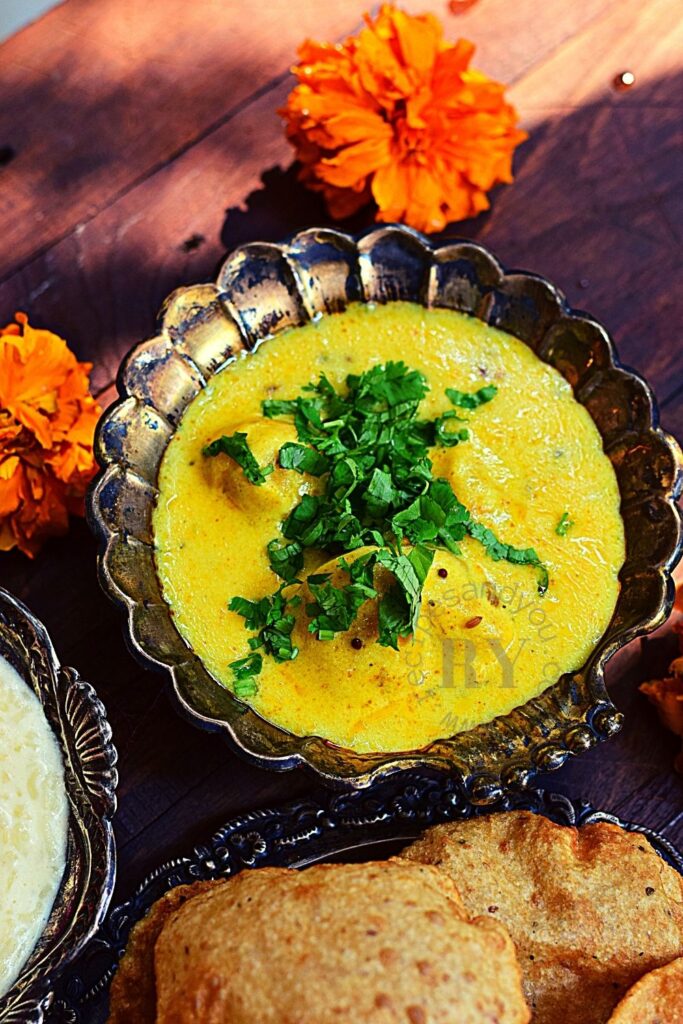
Why cow dung is used on govardhan puja?
Cow dung is considered to be sacred in Hinduism. A Krishna idol carrying the Govardhan parvat is made with cow dung and offerings are given on this pious day.
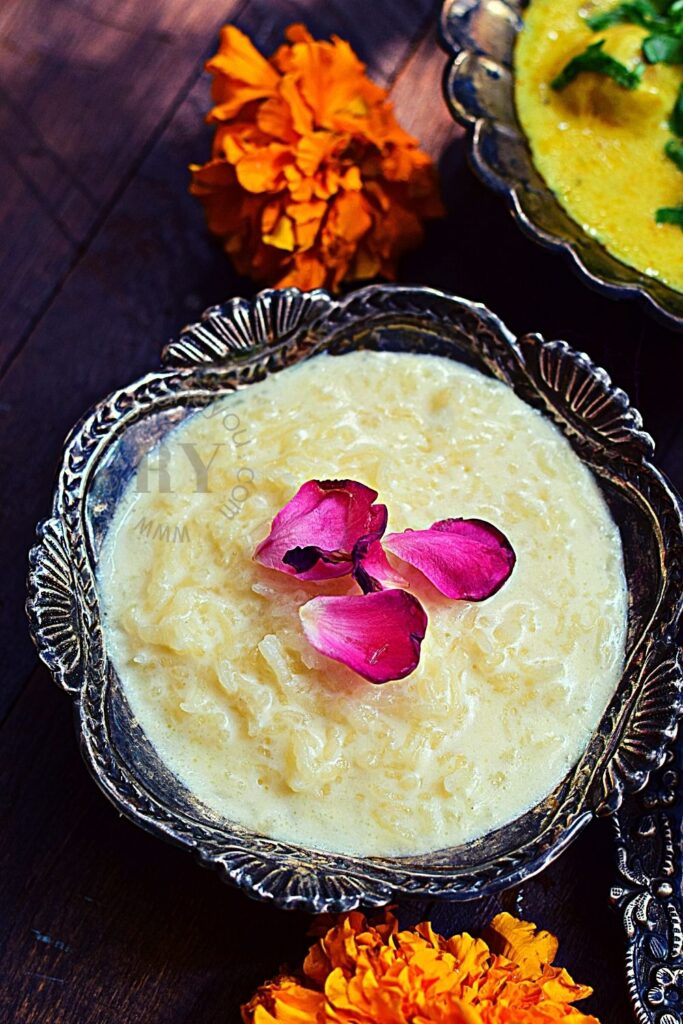
For Kheer Recipe click the link: Saffron Rose Kheer.
Other Festive Recipes On the Blog:
- 1 piece Karela deskinned / chopped
- 50 gms Yam / Suran / Jhimikand chopped /cubed
- 1 big potato cubed
- 4-5 bhindi cut
- 1 mooli/raddish chopped
- 1/2 gheeya cube
- 50 gms Palak chopped
- 6-7 Tomatoes finely chopped
- 1-2 pieces Parwal chopped
- 5-6 french beans chopped
- 4-5 long beans/ polo beans chopped
- 1-2 pieces Kundru /Ivy Gourd chopped
- 1 piece Arbi / Colocasia de-skinned/ chopped
- 1 carrot chopped
- 1.5 tsp salt or taste
- 1 tsp Kashmiri red chili powder/Degi Mirch or to taste
- 1-2 green chilies chopped
- 1/2 tsp haldi/turmeric powder
- 2 tsp coriander powder/ Dhania Powder
- 50 gms Pumpkin-orange with skin
- 2 tbsp ghee to cook
- 1/4 cup water
- 300 gms curd / dahi beaten
- 2 tbsp Besan / Gram flour plus 1/4 cup besan for pakoras
- 1 tsp salt plus 1/2 tsp salt for pakoras
- 1/2 tsp haldi/turmeric powder plus 1/2 tsp for pakoras
- 1 tsp kasoori methi /Fenugreek leaves
- 1/2 tsp cumin seed jeera
- 1/2 tsp methra seeds Fenugreek seeds
- 1/2 tsp sarson / mustard seeds
- 1/2 tsp coriander seeds sabut dhania
- 2 tbsp oil / mustard oil
- 1 tsp Kashmiri red chili powder/Degi Mirch for tempering
- 1 tsp Asafoetida /Hing optional
- 1/2 tsp ginger powder optional
- coriander leaves garnish
- 4 cups water
- 3 tbsp Semolina sooji
- 1 cup atta
- 1 tbsp Oil
- 1 tsp salt
- 1/2 tsp Ajwain/ Carom Seeds
- 1/4 cup water to knead the flour
- Wash, peel, and Chop/cut all the Vegetables. Chop the tomatoes separately. In a pressure cooker, Add ghee. Add jeera and let it splutter. Then add salt and all the spices.
- Mix well. Then add the tomatoes and cook on medium flame till oil separates. Then add all the rest of the vegetables and mix well. Add 1/4 cup water and cover the lid.
- Cook for 1 whistle on high flame. Then simmer the flame and cook until 1 more whistle. Then shut the flame and let it sit on the stove till steam releases. After opening, switch on the flame again and cook until all the water evaporates. Cook on medium to low flame to avoid burning.
- In a deep dish knead the flour, Add sooji, oil, salt, ajwain, and flour and mix well. Now, gradually keep adding water and knead a firm dough. Rest the dough for 15 min on the shelf covered with a muslin cloth.
- Heat oil and fry pooris. Serve hot.
- In a deep bowl, Take 300 gms of Dahi. Beat/whisk it well until lumps are removed. Add 4 cups of water and mix until smooth texture. Add salt, turmeric powder, ginger powder, and besan and mix well.
- In a kadai, heat oil. Add jeera, methra, sarson seeds, dhania seeds and kasoori methi. Now add the curd and besan mix in. Keep stirring till one boil on full flame. Then reduce the flame and cook for 20 minutes or until done. To find out if it's done: just taste it and if you can feel the besan on your palette then keep cooking for a few minutes and if you feel a fine smooth texture then it's done. You can make out the difference.
- Tempering: Heat oil, add red chili powder and hing, and pour this mix over the Kadi.
- For Pakora: In a bowl, add 1/4 cup besan, 1/2 tsp ajwain, 1/2 tsp salt, 1 tsp baking powder. Add 4 tbsp water and mix well till foamy and thick batter is made. Add more water if needed. Beat well and smoothen to remove lumps.
- Heat oil and fry the pakoras on high flame. This batter will make 12 balls/ pakoras approx.
Tip: While making kadi, even when you simmer, it keeps boiling and spills over the Kadai. To prevent this, just put a steel Katori or Small plate at the bottom of the vessel. This will prevent the kadi from spilling over.
- You may add more vegetables to the annakut. I added as much available. But traditionally, any seasonal vegetable can be added.

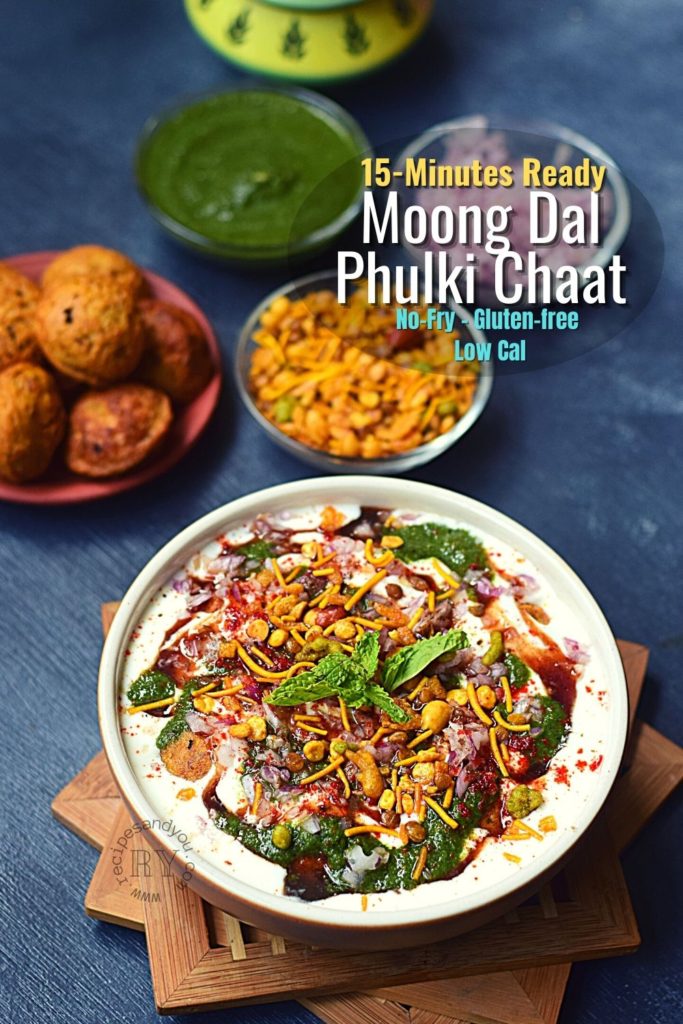
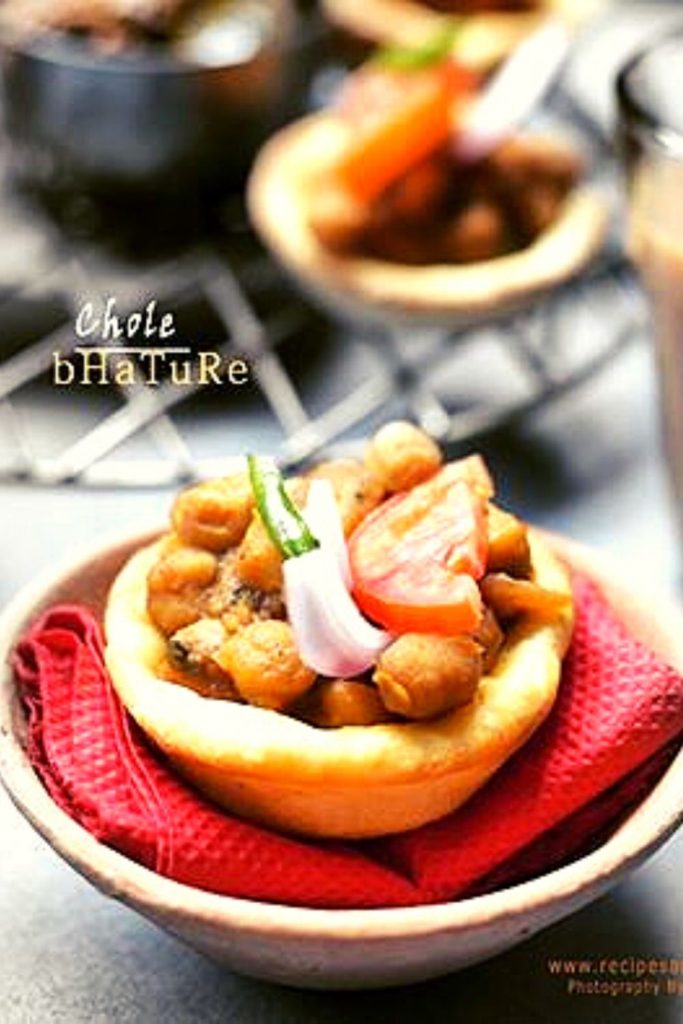
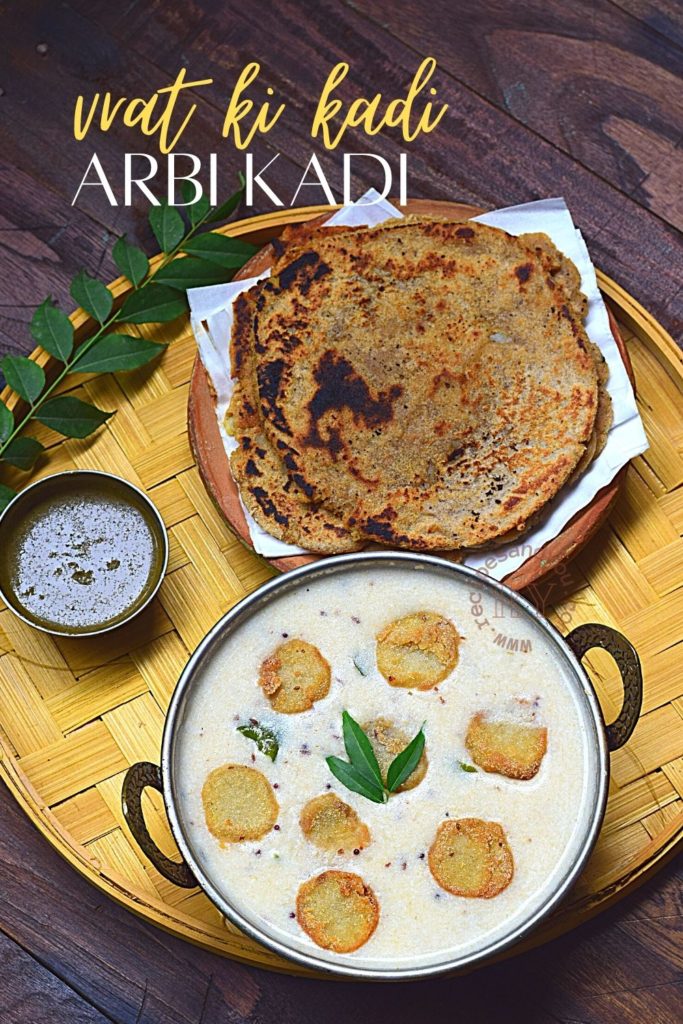
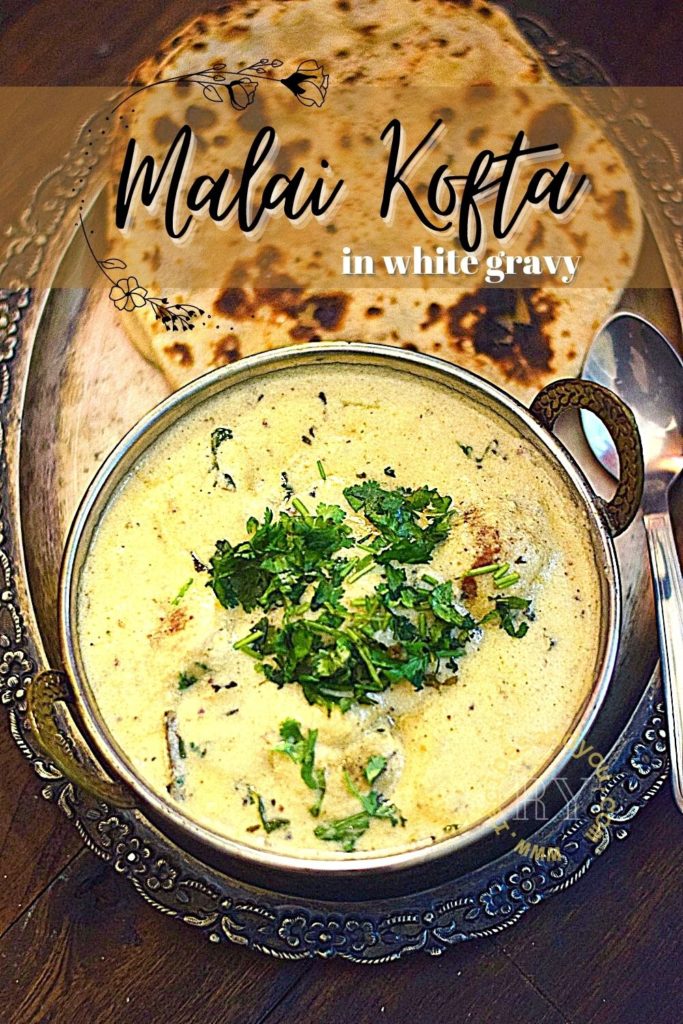
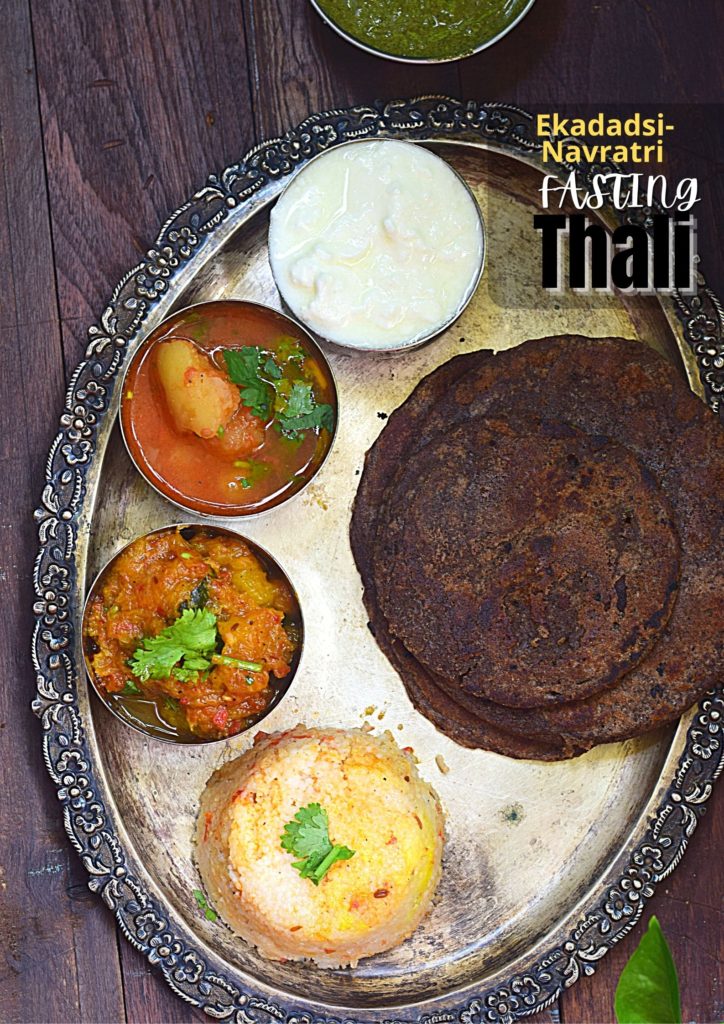
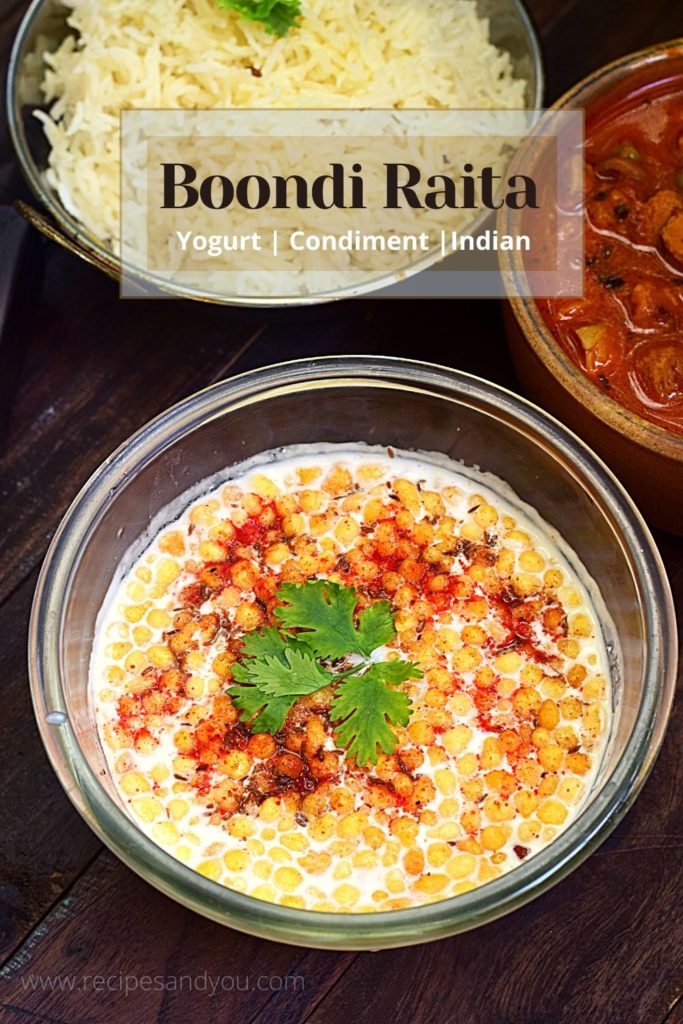
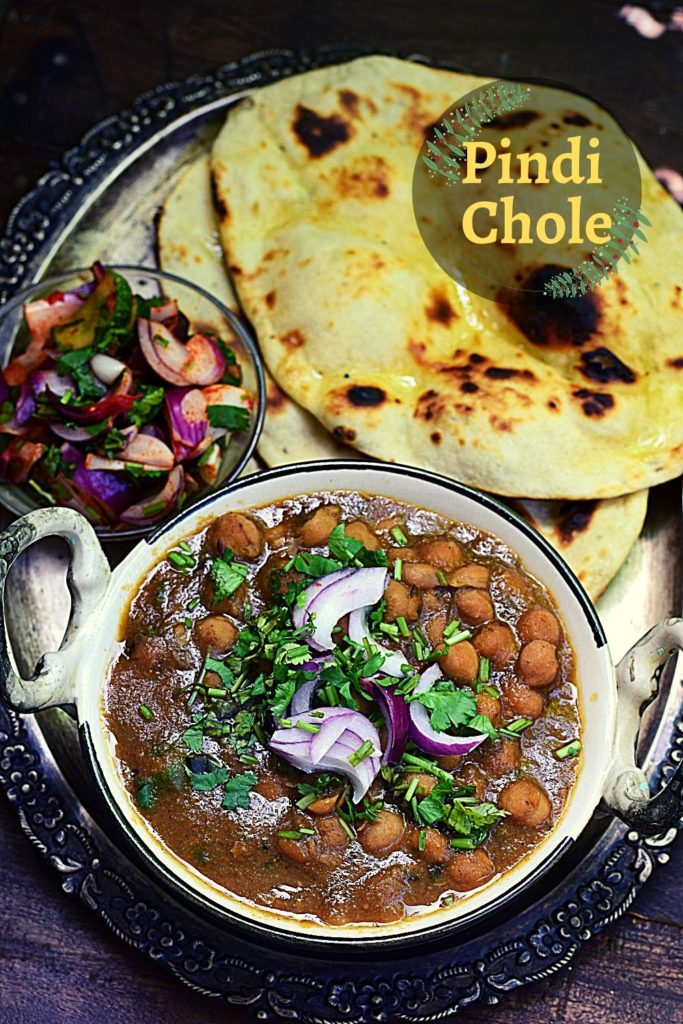
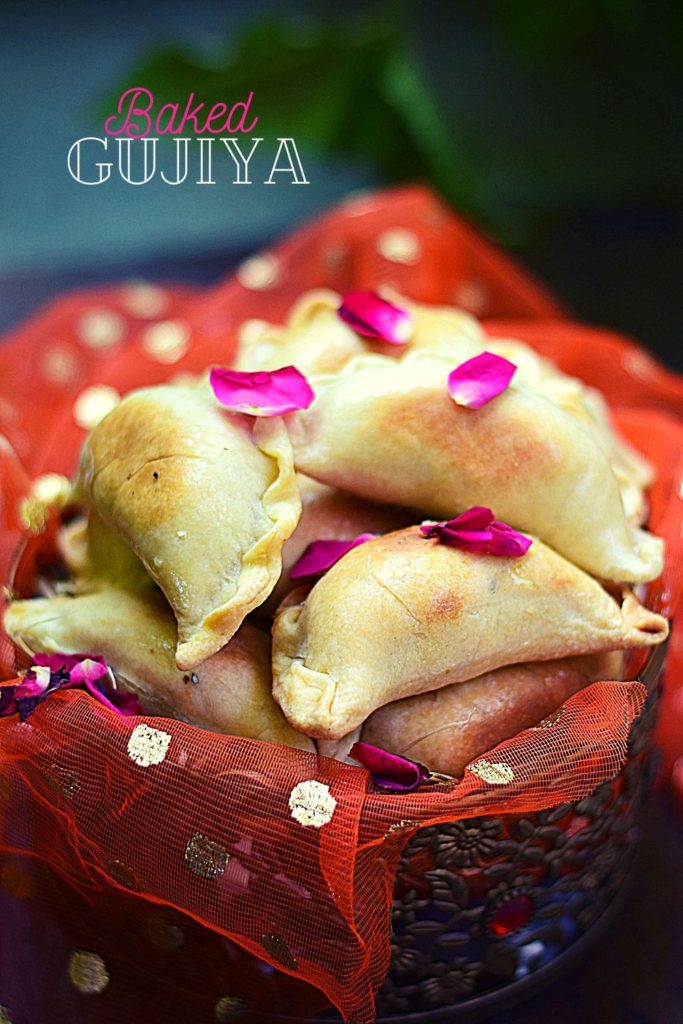
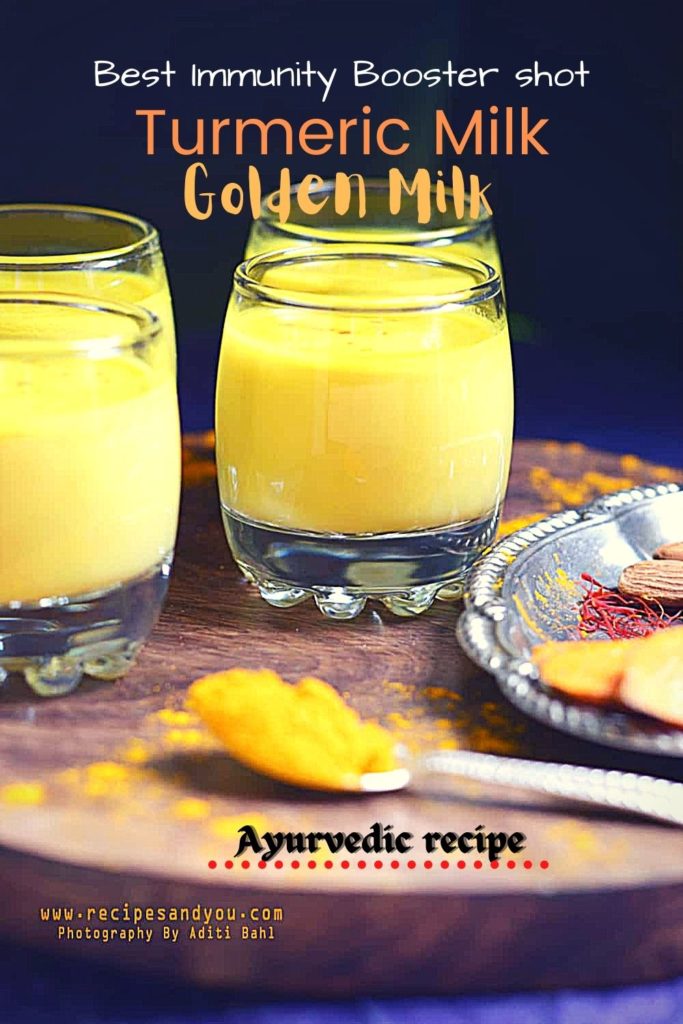
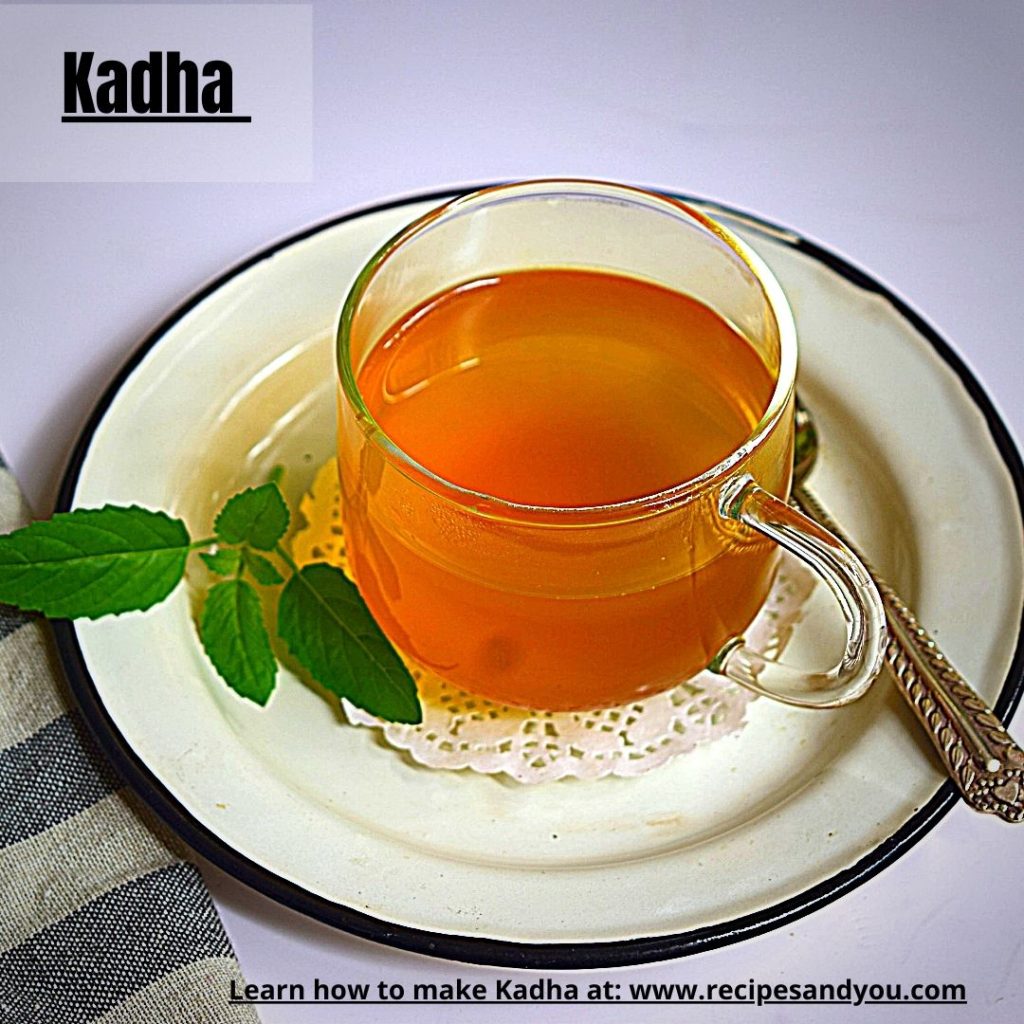
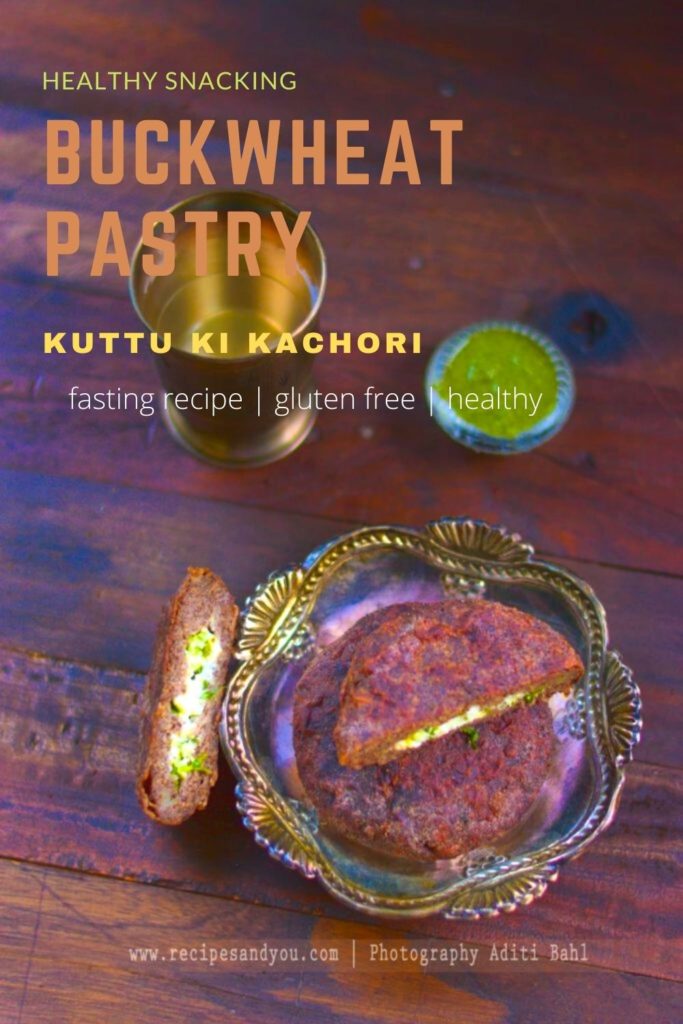
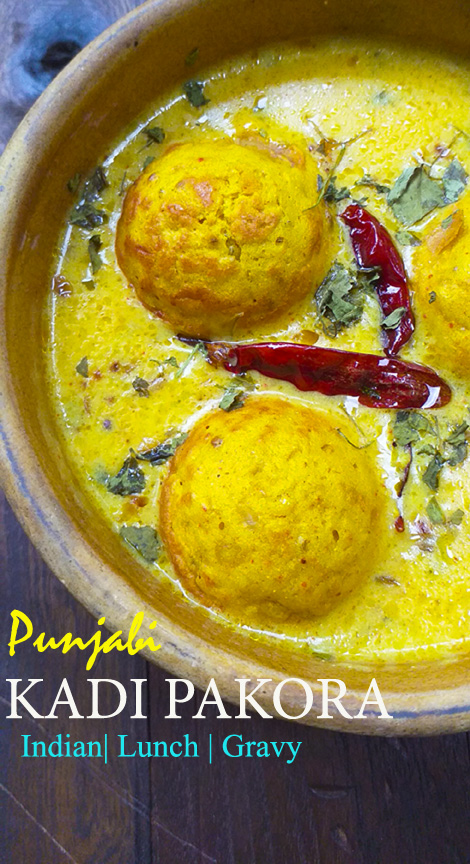
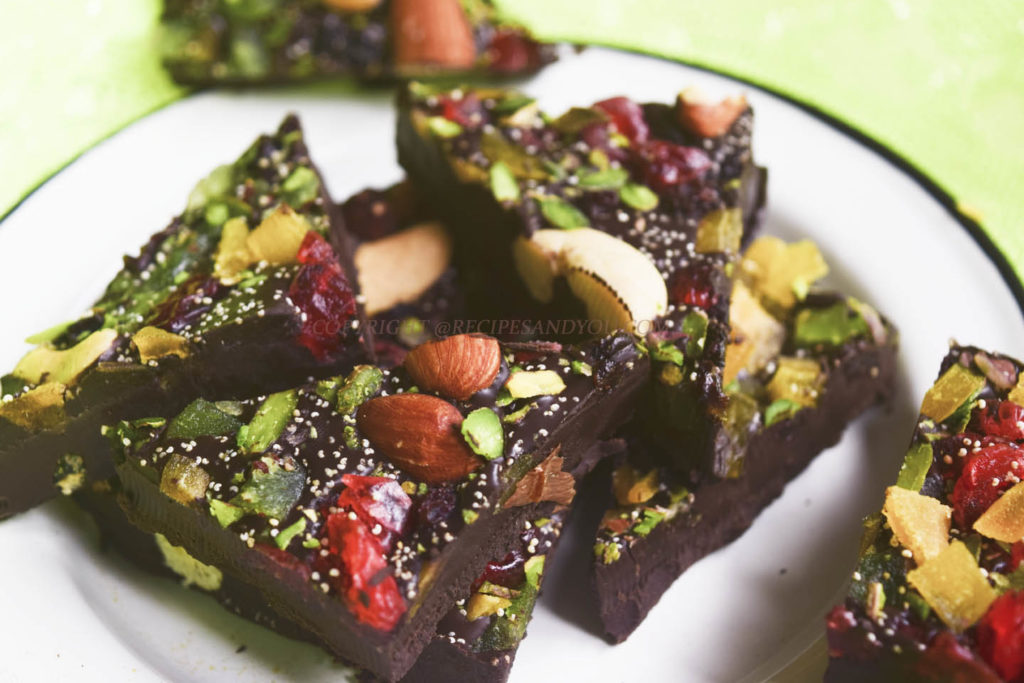
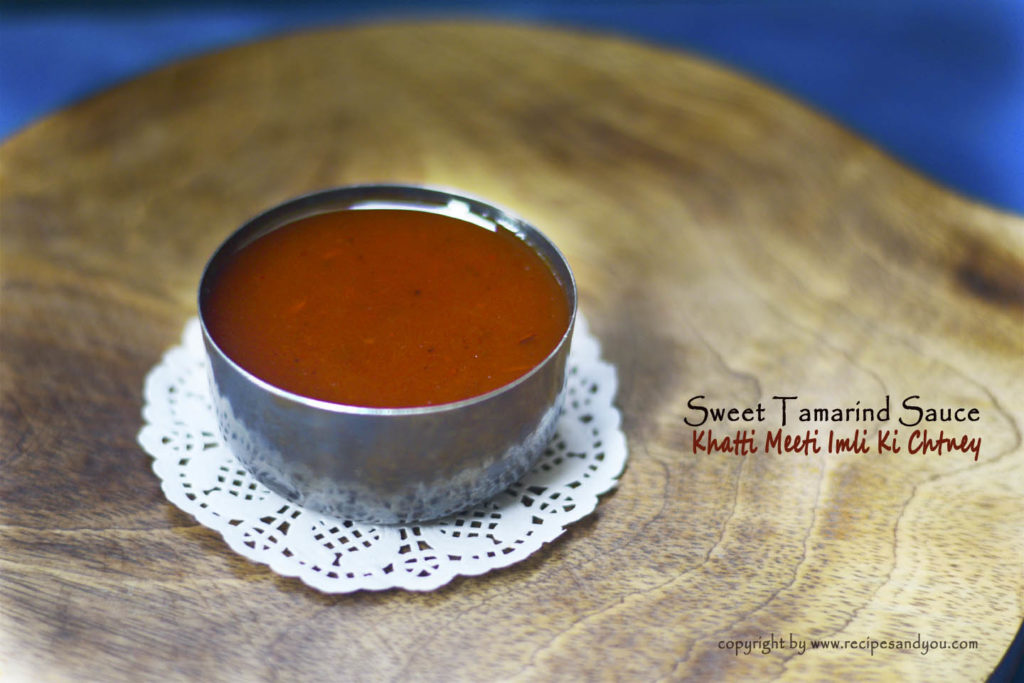
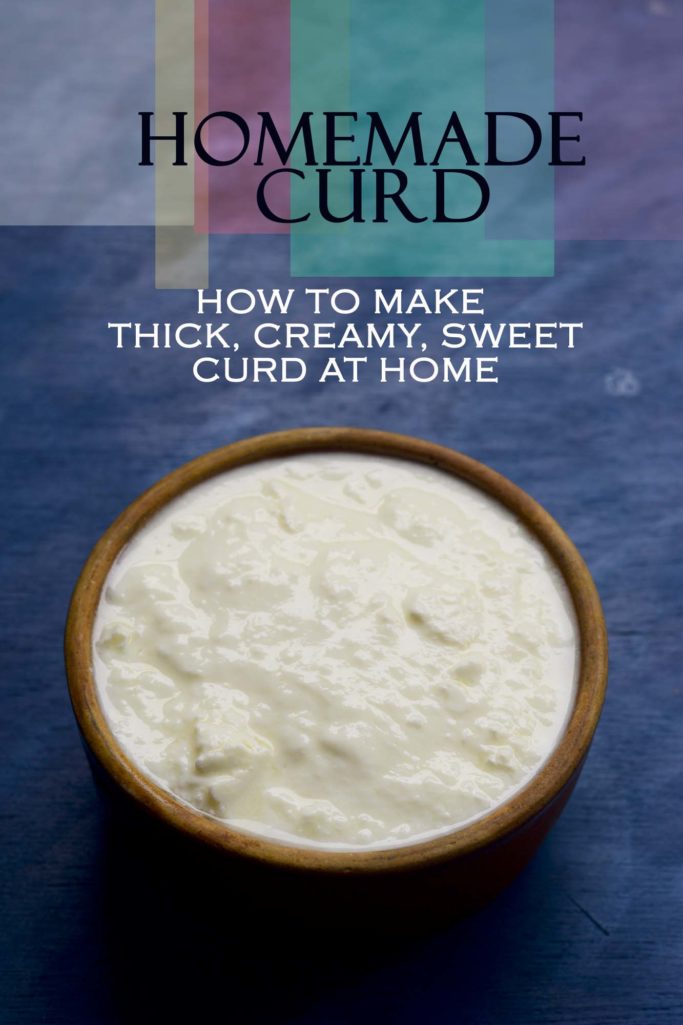
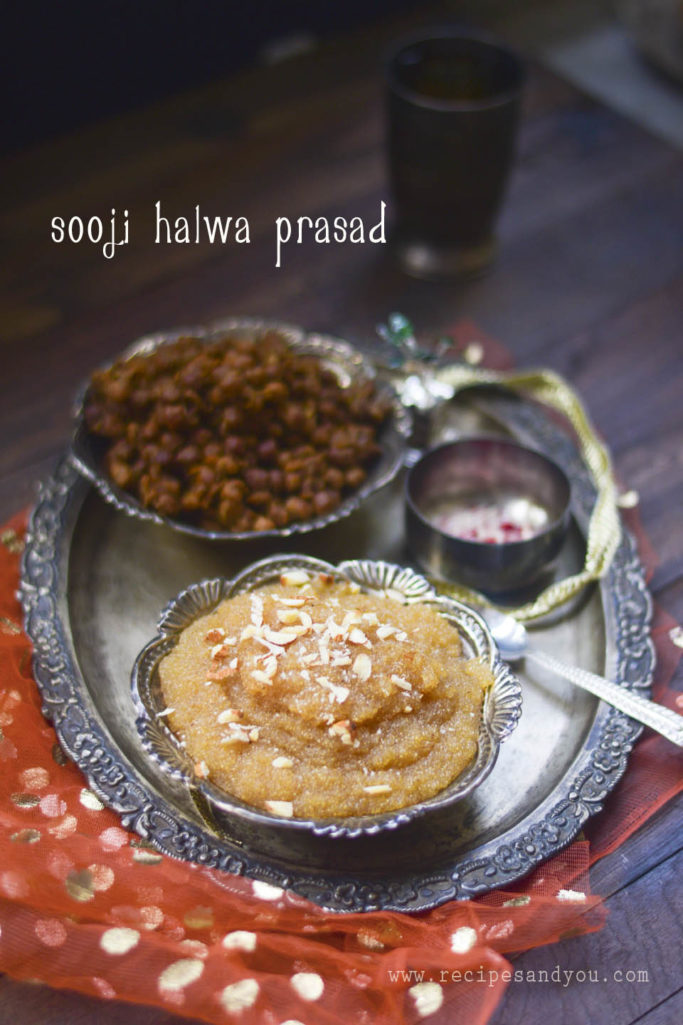
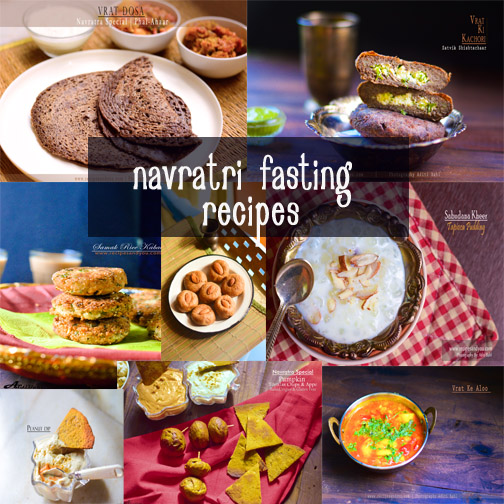
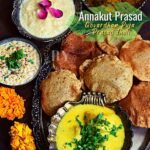

Leave a Reply